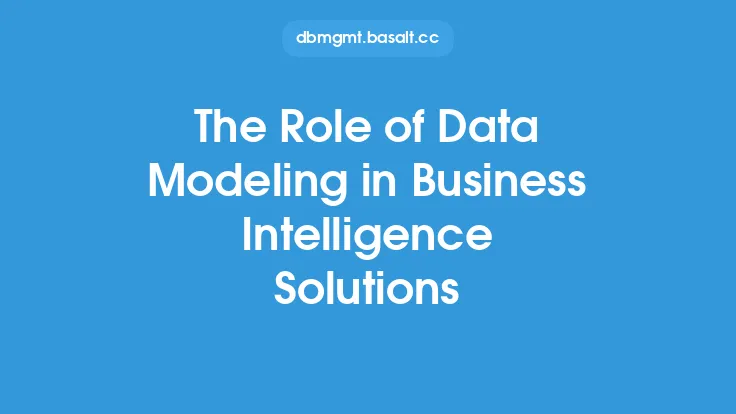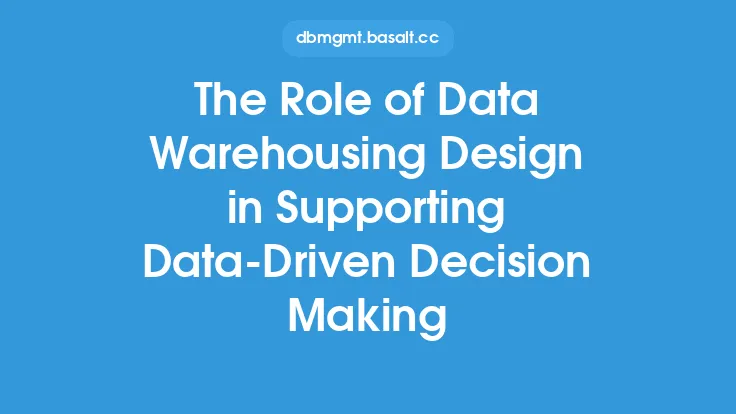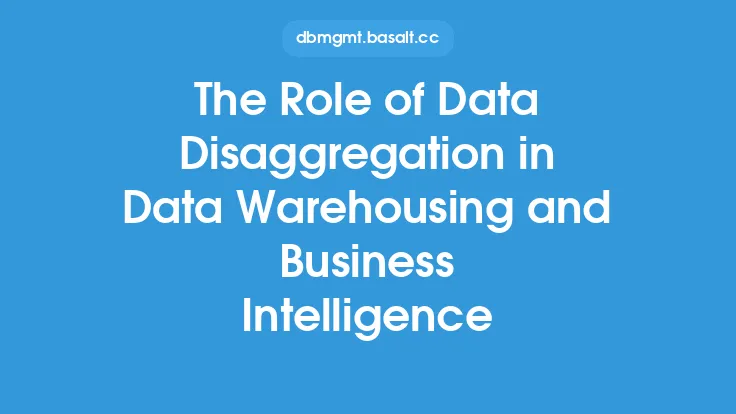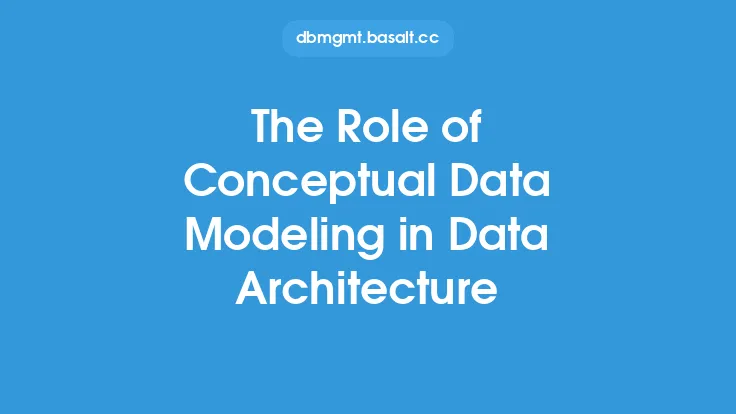Data modeling is a crucial aspect of data warehousing, as it enables organizations to design and implement a robust, scalable, and maintainable data warehouse that meets their business intelligence needs. At its core, data modeling involves creating a conceptual representation of the data that will be stored in the data warehouse, including the relationships between different data entities. This process helps to ensure that the data warehouse is designed to support the organization's business requirements, and that the data is organized in a way that is easy to access, analyze, and report on.
Introduction to Data Modeling Concepts
Data modeling for data warehousing involves several key concepts, including entities, attributes, and relationships. Entities are the objects or concepts that are being modeled, such as customers, orders, or products. Attributes are the characteristics or properties of these entities, such as customer name, order date, or product description. Relationships, on the other hand, describe how these entities interact with each other, such as a customer placing an order or a product being part of an order. By understanding these concepts, data modelers can create a robust and scalable data model that supports the organization's business intelligence needs.
The Data Modeling Process
The data modeling process for data warehousing typically involves several steps, including requirements gathering, conceptual modeling, logical modeling, and physical modeling. Requirements gathering involves working with stakeholders to understand the business requirements and identify the key performance indicators (KPIs) that need to be supported by the data warehouse. Conceptual modeling involves creating a high-level model of the data, including the key entities, attributes, and relationships. Logical modeling involves creating a more detailed model of the data, including the specific data structures and relationships. Finally, physical modeling involves creating the actual database design, including the tables, indexes, and other physical storage structures.
Data Modeling Techniques
There are several data modeling techniques that are commonly used in data warehousing, including entity-relationship modeling, dimensional modeling, and object-oriented modeling. Entity-relationship modeling is a traditional approach to data modeling that involves creating a model of the data entities and their relationships. Dimensional modeling, on the other hand, involves creating a model of the data that is optimized for querying and analysis, with a focus on facts and dimensions. Object-oriented modeling involves creating a model of the data that is based on objects and their relationships, and is often used in conjunction with entity-relationship modeling.
Data Modeling Tools and Technologies
There are several data modeling tools and technologies that are available to support the data modeling process, including data modeling software, database management systems, and data integration tools. Data modeling software, such as ERwin or PowerDesigner, provides a graphical interface for creating and editing data models, as well as features for generating database code and performing data modeling tasks. Database management systems, such as Oracle or SQL Server, provide a platform for storing and managing the data, as well as features for optimizing query performance and ensuring data integrity. Data integration tools, such as Informatica or Talend, provide a way to integrate data from multiple sources, including databases, files, and applications.
Best Practices for Data Modeling
There are several best practices for data modeling that can help to ensure that the data warehouse is designed to meet the organization's business intelligence needs. These include keeping the data model simple and intuitive, using standard data modeling notation and terminology, and ensuring that the data model is well-documented and easily maintainable. Additionally, it is important to involve stakeholders in the data modeling process, to ensure that the data model meets their needs and expectations. Finally, it is important to continuously monitor and refine the data model, to ensure that it remains relevant and effective over time.
Common Data Modeling Mistakes
There are several common data modeling mistakes that can have a significant impact on the effectiveness of the data warehouse. These include failing to involve stakeholders in the data modeling process, using a data model that is too complex or difficult to understand, and failing to consider the performance and scalability requirements of the data warehouse. Additionally, it is common for data modelers to overlook the need for data governance and data quality, which can lead to data inconsistencies and inaccuracies. By being aware of these common mistakes, data modelers can take steps to avoid them and create a robust and effective data model.
The Future of Data Modeling
The future of data modeling is likely to be shaped by several trends and technologies, including big data, cloud computing, and artificial intelligence. Big data, for example, is driving the need for more scalable and flexible data models, as well as new approaches to data modeling and data governance. Cloud computing, on the other hand, is providing new opportunities for data modeling and data warehousing, including the ability to quickly and easily deploy and manage data warehouses in the cloud. Artificial intelligence, finally, is likely to play a major role in the future of data modeling, including the use of machine learning and natural language processing to automate and optimize the data modeling process. By staying up-to-date with these trends and technologies, data modelers can ensure that their skills and knowledge remain relevant and effective in the years to come.





